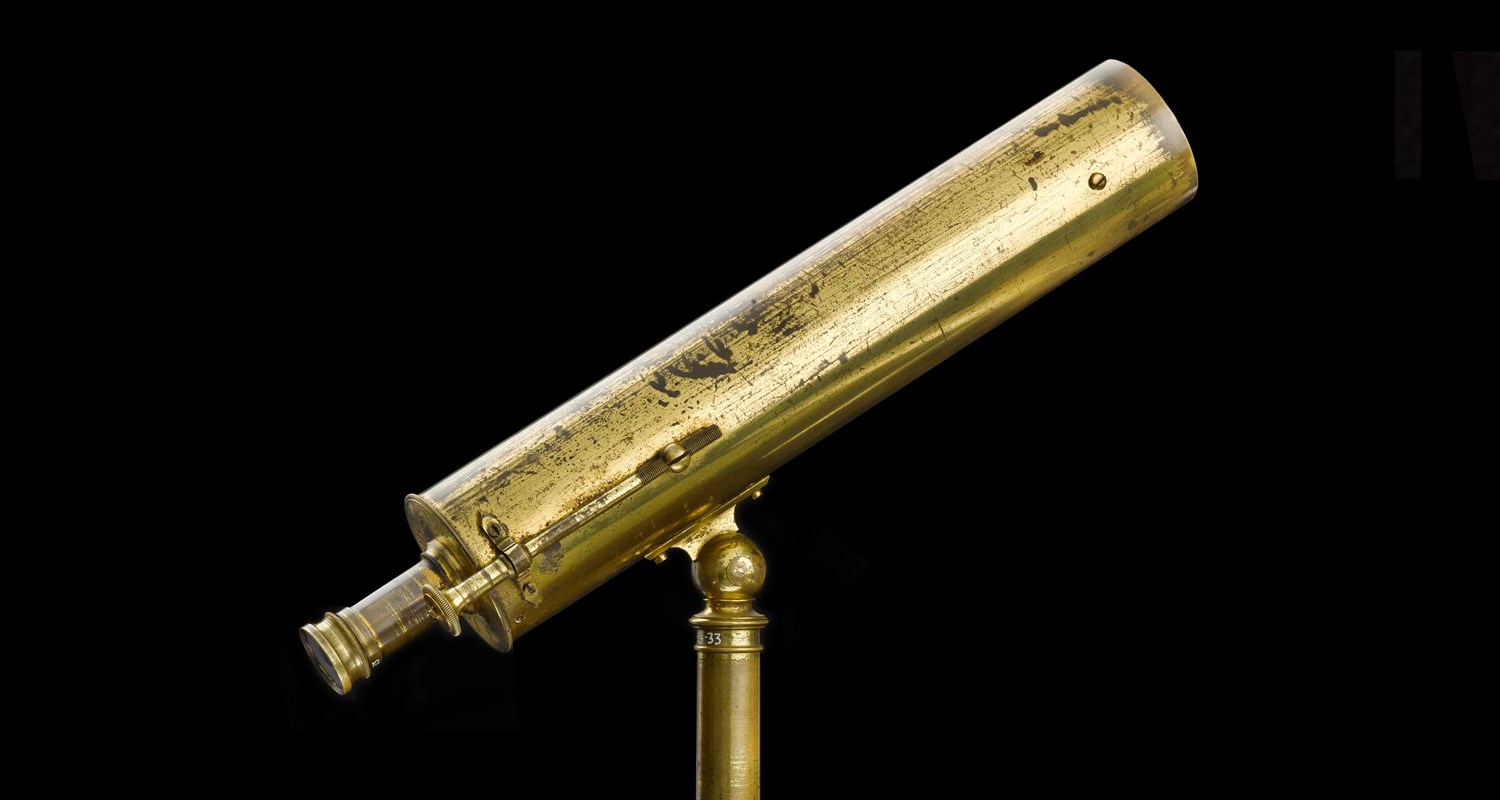Reflecting Telescopes
Friday 25 March to 28 August 2016
National Museum of Scotland, Chambers Street, Edinburgh
Admission: FREE
A new display at the National Museum of Scotland will reveal the work of pioneering Scots in the development of the reflective telescope, Reflecting Telescopes opens on Friday 25 March.
James Gregory (1638 75), a contemporary of Isaac Newton and Professor of Mathematics at St Andrews then Edinburgh University, published an innovative design for a ‘reflecting’ telescope in 1663. A predecessor of the modern telescope, Gregory’s device used mirrors, rather than glass lenses, to create a more compact instrument and sharper images.
Early examples of Gregorian telescopes produced by Edinburgh-born optician James Short (1710-68) will be included in the display. Combining self-taught engineering skills with an interest in practical mathematics, Short constructed over 1,300 telescopes in his lifetime. These instruments, considered the very best available, were sold all over the world to observatories in Paris, St Petersburg, Harvard and Uppsala, private customers in Europe and North America and two to accompany Captain James Cook on journeys to observe the Transit of Venus in 1761 and 1769.
The display, which consists of three cases in the museum’s Grand G¬¬allery, will touch upon astronomy in Edinburgh, a city that has remained at the forefront of astronomical research and discovery for more than four centuries. Now home to the United Kingdom Astronomy Technology Centre, Scotland’s capital is still producing crucial instrumentation for ground-breaking projects around the world.
Dr Alison Morrison-Low, Research Associate at National Museums Scotland, said:
“Astronomy has been taught at the University of Edinburgh since its foundation in 1583 and the city remains internationally active in the field today. This enduring legacy is due to the remarkable inventiveness of Scots such as James Gregory and James Short. Reflecting Telescopes will highlight the Scottish contribution to improvements in telescope design through important objects from National Museums Scotland’s collections.”
Notes to Editors
- National Museums Scotland is one of the leading museum groups in the UK and Europe and it looks after collections of national and international importance. The organisation provides loans, partnerships, research and training in Scotland and internationally. Our individual museums are the National Museum of Scotland, the National Museum of Flight, the National Museum of Rural Life and the National War Museum. The National Museums Collection Centre in Edinburgh houses conservation and research facilities as well as collections not currently on display.
- The National Museum of Scotland reopened in summer 2011 following a three-year, £50m redevelopment. With over 8 million visitors since reopening, the National Museum of Scotland is the most popular museum in the country outside of London (source: Association of Leading Visitor Attractions). The National Museum of Scotland was awarded ‘Gold’ Level Green Tourism Visitor Attraction status in 2016.
For further information and images please contact Kirsten Cowie, Press Office, National Museums Scotland, tel 0131 247 4391, k.cowie@nms.ac.uk.

